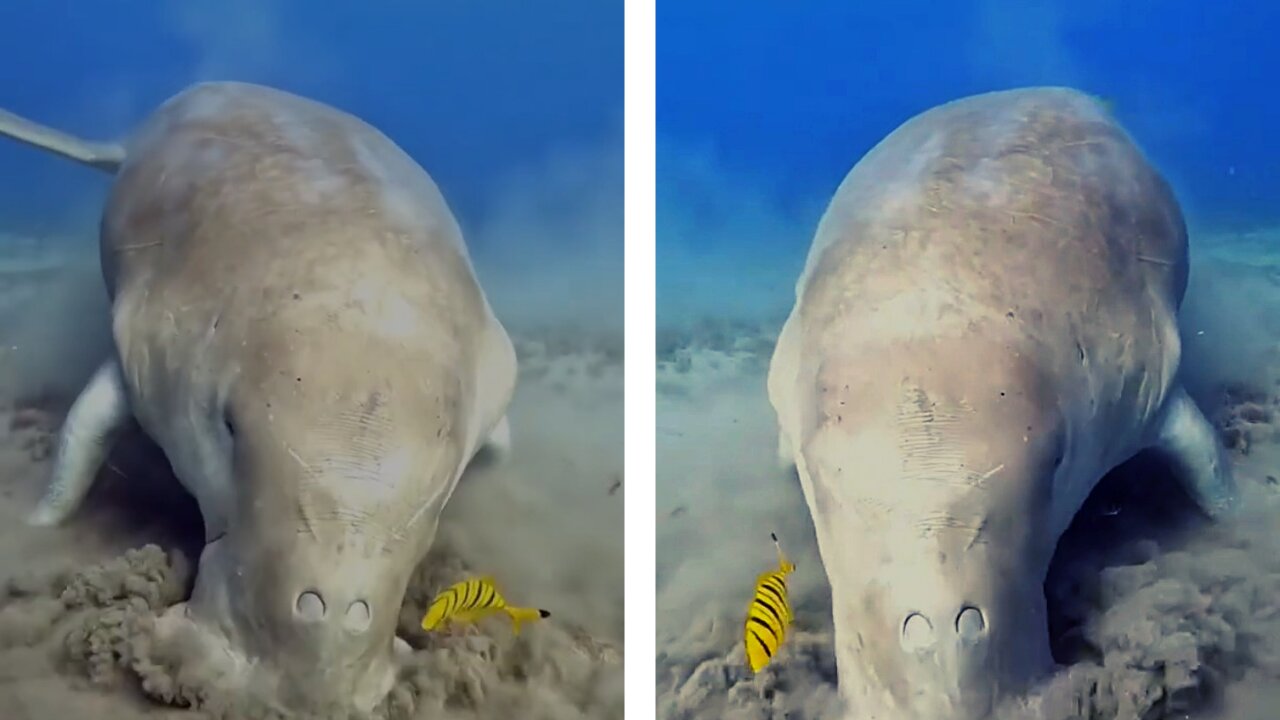Premium Only Content

A huge animal with the strength of a polar bear but with the tenderness of a teddy bear
Its common name comes from the indigenous Caribbean language (manatee means "with breasts"), while the scientific name (Trichechus) refers to the small hairs scattered on its body.
The West Indian manatee is a large mammal: it can weigh up to 300 kilograms. It has fin-like forelimbs with five deformed toes, equipped with small nails. The tail resembles a spatula and distinguishes it from other sirenians such as dugongs; the skin is very thick and bluish-gray.
Like all other mammals, manatees come up to the surface to breathe air (if they are resting, they come up more often, every 20 minutes; on the other hand, when they are active, they come up much less often). They exchange up to 90% of the air in their lungs, exhaling very strongly when their nose breaks the surface of the water; breathing in this way means that there is more fresh oxygen and this allows them to remain submerged longer. Another characteristic of their breathing is related to two adaptations: they can only breathe with their nose, which in turn has special folds that seal when the animal is submerged.
Indians have hunted the West Indian manatee for food and shelter. The greed for fat and skin has wiped out most of the species, given its atrocious persecution. Otherwise, it has no natural predators, only the killer whales that sometimes frequent its habitat.
-
 2:02:28
2:02:28
Badlands Media
1 day agoDevolution Power Hour Ep. 385: Trump “Death” Hoax, Supreme Court Tariffs Fight, and Tech-Military Ops
63.5K26 -
 1:56:48
1:56:48
Tundra Tactical
6 hours ago $12.40 earnedFull Semi-Auto Comedy Hour
31.7K2 -
 2:07:31
2:07:31
The Connect: With Johnny Mitchell
15 hours ago $7.70 earnedSecrets Of The Cocaine Cowboys: Miami Drug Lord Reveals Truth About His BILLION-DOLLAR Coke Empire
30.3K1 -
 1:55:52
1:55:52
BlackDiamondGunsandGear
1 day agoGlocks Want Gun Control? // Trump Tramples on your Rights? // After Hours Armory
29.9K3 -
 1:55:52
1:55:52
DLDAfterDark
11 hours ago $4.31 earnedDLD Live! Trump - Flag Burning - Glock & Gun Control - Martial Law Light?? - After Hours Armory
24.6K3 -
 13:46:18
13:46:18
GritsGG
17 hours agoRumble Customs! 3515 Ws! 🫡!
94.2K -
 5:59:47
5:59:47
SpartakusLIVE
12 hours agoThe HUGEST Brain (not forehead) delivers Saturday SPARTOONS || Variety Later - Shadow of Mordor
197K4 -
 2:34:20
2:34:20
Barry Cunningham
13 hours agoPRESIDENT TRUMP WELCOMES FOOTBALL SEASON! AND MORE BREAKING NEWS!
90.3K56 -
 54:47
54:47
Side Scrollers Podcast
17 hours agoSide Scroller Presents KING OF THE KART | MASSIVE MARIO KART TOURNAMENT
52.7K1 -
 4:12:33
4:12:33
Mally_Mouse
17 hours ago🔥🍺Spicy HYDRATE Saturday!🍺🔥-- Let's Play: Baldur's Gate!
41.4K4